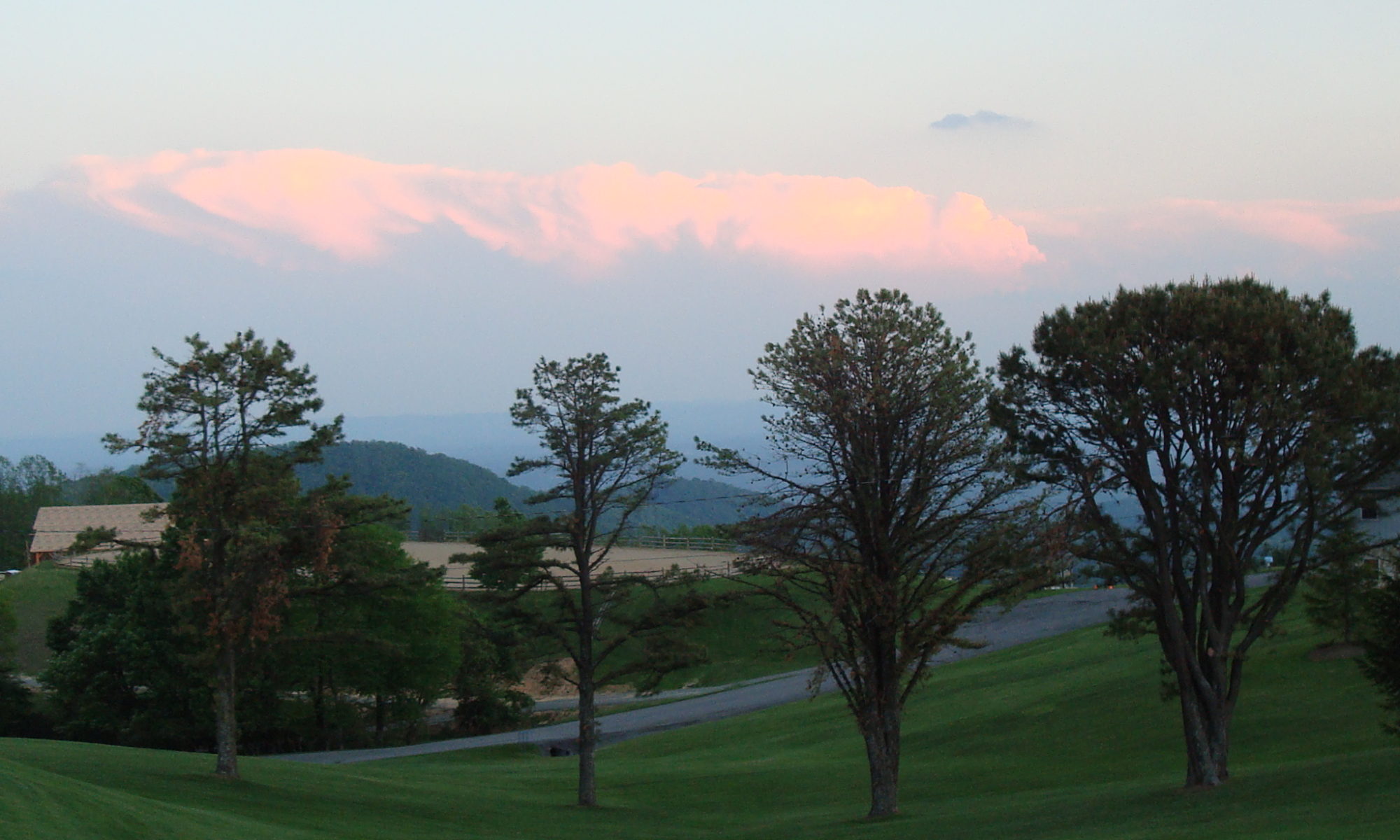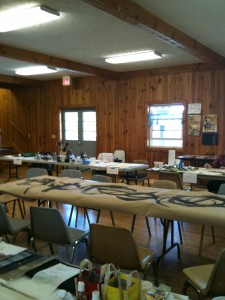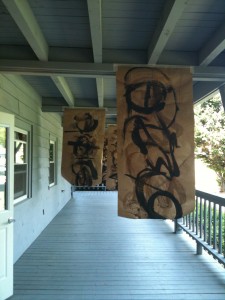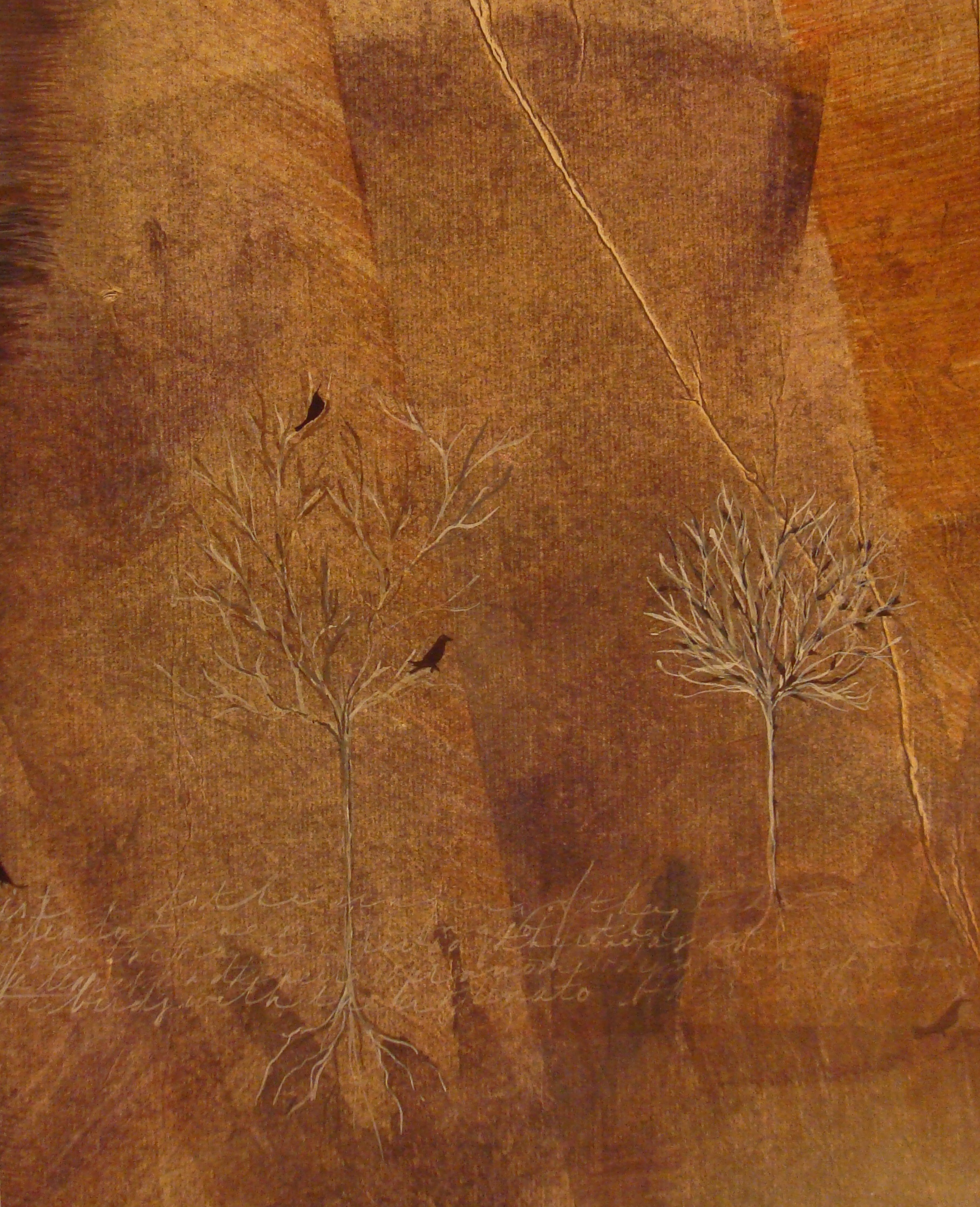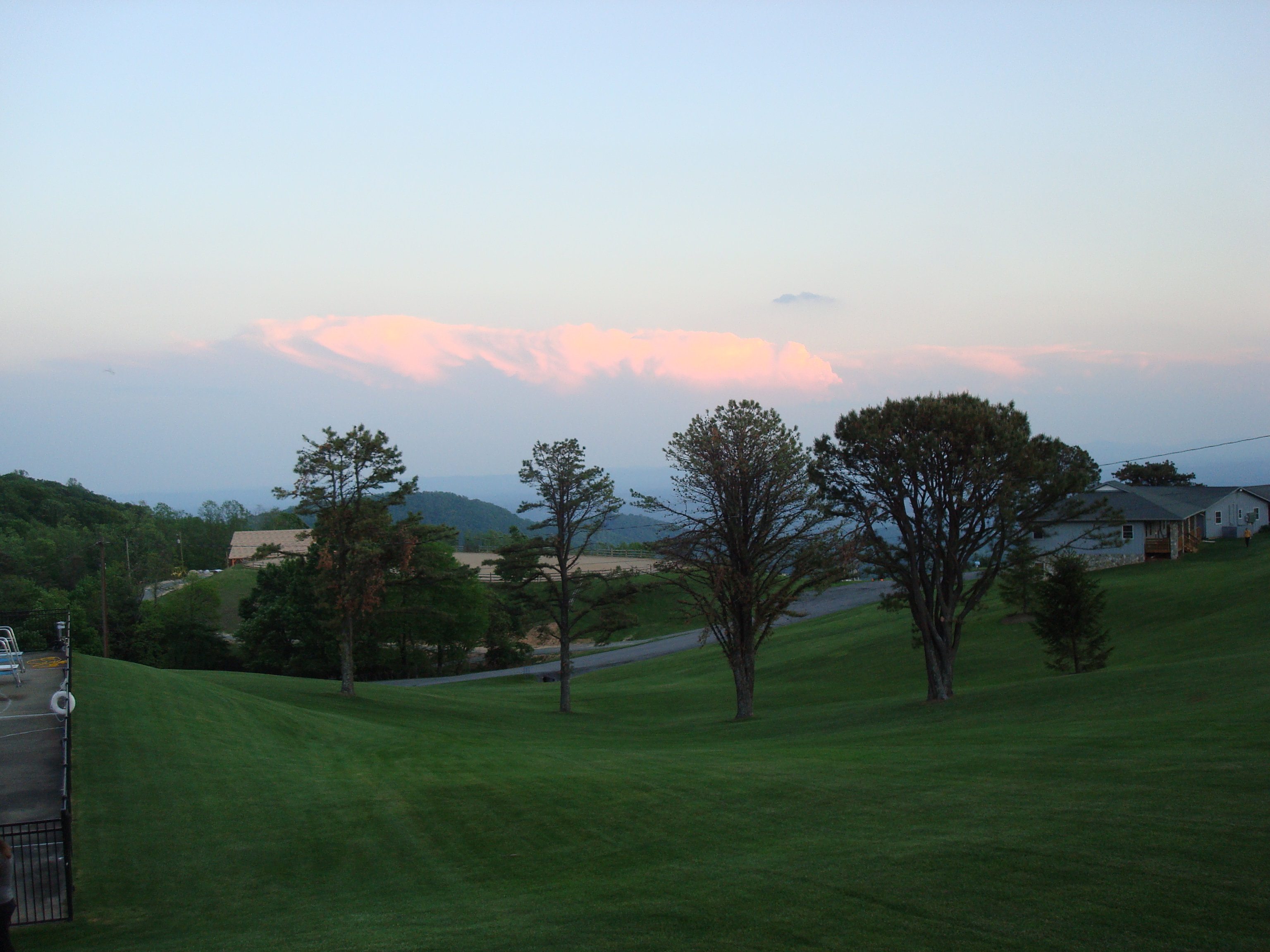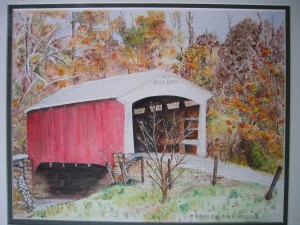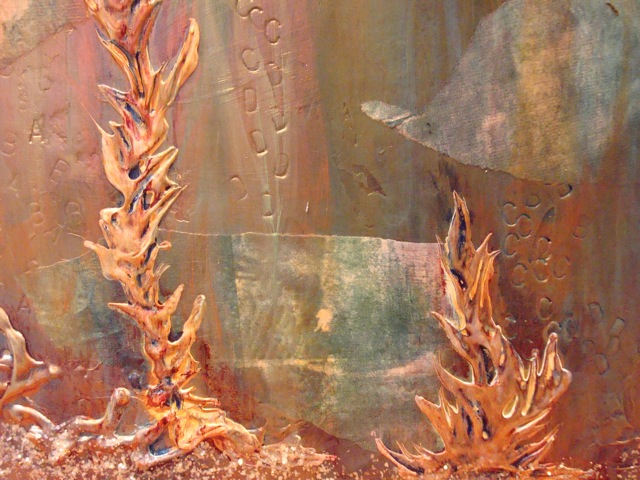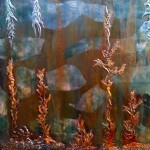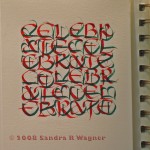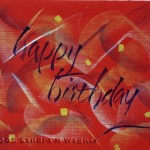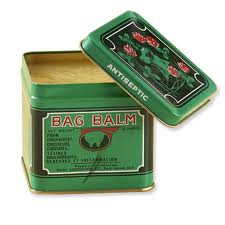I had the great fortune of spending the weekend at Annie Cicales’s in Fairland, North Carolina with six other calligraphers studying all the ins and outs of working on vellum. We began with wonderful slunk (fetal or stillborn) calf skins hand chosen by Denis for us from Ireland. Then from cutting, sanding and sandarac to writing materials, backing papers and finally stretching and mounting, we each produced delightful 5×8 pieces.
 It was an amazing three days of work interspersed with video presentations by Denis where we marveled at both the diversity of his work and the myriad ways he’s incorporated calfskin into the most contemporary of calligraphic work. Many thanks are owed to both Manny Murillo and Annie Cicale for all their hard work arranging and hosting us.
It was an amazing three days of work interspersed with video presentations by Denis where we marveled at both the diversity of his work and the myriad ways he’s incorporated calfskin into the most contemporary of calligraphic work. Many thanks are owed to both Manny Murillo and Annie Cicale for all their hard work arranging and hosting us.


